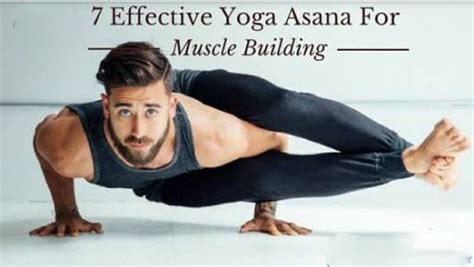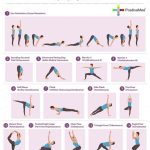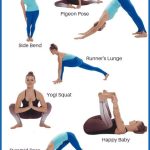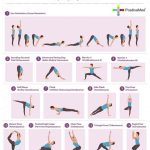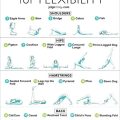The Surprising Role of Yoga in Building Muscle Strength: More Than Flexibility
In the fitness world, yoga is often associated with flexibility, relaxation, and mental well-being. However, it can play a crucial role in building muscle strength as well. This article takes a deep dive into how yoga helps enhance muscle strength, with evidence-based insights, real-world examples, and a balanced perspective on the limitations and opportunities within the practice.
Introduction
Yoga has long been viewed as a practice for calming the mind, improving flexibility, and fostering relaxation. While it undeniably excels in these areas, the benefits of yoga for muscle strength are often underappreciated. Understanding the mechanics of various yoga poses, the types of muscle engagement they stimulate, and how yoga complements or contrasts with traditional strength-building methods, can redefine how we view this ancient practice. This article will explore key concepts related to muscle strength development through yoga, highlighting case studies, practical applications, and guidelines for optimizing muscle gain through consistent yoga practice.
Key Concepts
To appreciate how yoga contributes to muscle strength, it’s essential to break down a few fundamental concepts:
- Isometric Contraction: Many yoga poses involve holding a specific position for an extended time. This engages the muscles in an isometric contraction, where the muscle maintains a static position under tension, helping develop muscle endurance and strength.
- Eccentric Contraction: During the transition between poses, muscles often lengthen while maintaining tension, known as eccentric contraction. This form of movement helps build strength more effectively than simply lifting or pushing weights.
- Muscle Synergy: Yoga frequently targets muscle groups that work together. This improves overall body coordination and functional strength, which is often lacking in isolated muscle-building exercises.
Historical Context
Yoga’s origins date back thousands of years, with a strong focus on mental and spiritual well-being. Strength-building was not explicitly stated as a goal of ancient yoga practices, but many traditional poses were designed to support a strong and balanced body. Historically, yoga asanas (postures) aimed to prepare the body for prolonged meditation by strengthening the spine, core, and limbs.
Modern iterations of yoga, particularly in the West, have evolved to include variations such as Power Yoga, Vinyasa, and Ashtanga, all of which emphasize muscular engagement alongside flexibility and balance. These forms of yoga borrow heavily from traditional postures but integrate a fitness-oriented approach that modern practitioners can utilize for muscle development.
Current State Analysis
In today’s fitness landscape, yoga is widely viewed as complementary to other strength-building exercises like weightlifting or bodyweight training. However, several studies and anecdotal reports suggest that yoga on its own can help build significant muscle strength, particularly when practiced with intention and consistency. Below are some key findings and insights from the current understanding of how yoga aids in muscle development:
- Body Weight Resistance: Yoga uses the practitioner’s body weight as resistance, making it an excellent form of functional strength training. Poses such as Plank, Chair Pose, and Warrior series challenge large muscle groups, contributing to both endurance and strength.
- Improved Muscle Activation: Compared to isolated exercises, yoga helps activate multiple muscle groups at once. This leads to more efficient muscle synergy, with exercises like Downward Dog engaging the shoulders, arms, core, and legs simultaneously.
- Recovery and Flexibility: Regular yoga practice helps reduce muscle stiffness and enhances flexibility, which in turn allows for better performance in strength-training sessions. By improving the range of motion, it facilitates greater muscle activation during exercises.
Practical Applications
Incorporating yoga into a routine aimed at building muscle strength requires a strategic approach. Here are some practical guidelines:
- Consistency is Key: Like any strength-training routine, consistency matters. Practicing yoga at least three to four times per week can help achieve noticeable muscle gains.
- Focus on Poses That Build Strength: Certain poses are more effective for building strength. For example, poses like Chaturanga strengthen the upper body, while Warrior Poses target the legs and core.
- Hold Poses Longer: Increasing the duration of each pose (30 seconds to 1 minute or longer) will increase the tension placed on the muscles, encouraging growth.
- Incorporate Vinyasa or Ashtanga Yoga: These forms of yoga include fast-paced flows that blend cardio with strength-building, offering a balanced workout that can promote muscle growth.
Case Studies
To illustrate how yoga can help build muscle strength, let’s examine several real-world examples:
| Case Study | Muscle Focus | Results |
|---|---|---|
| John, 35, Ashtanga Yoga | Full-body strength | After six months, John reported significant improvements in core stability, upper body strength (via Chaturanga and Crow poses), and leg power (via Warrior poses). |
| Maria, 28, Power Yoga | Legs and Core | Maria’s regular Power Yoga practice led to noticeable improvements in leg strength and endurance, particularly in her quadriceps and hamstrings. |
| Lisa, 42, Vinyasa Yoga | Upper body and core | Increased upper body strength through regular plank poses and core engagement in balancing postures. |
Stakeholder Analysis
Different stakeholders in the yoga and fitness world have varying perspectives on its muscle-building potential:
- Fitness Enthusiasts: Often see yoga as supplementary to weight training. They value the flexibility benefits but may underestimate the strength-building aspect.
- Yoga Practitioners: Long-time practitioners recognize the inherent strength-building potential but may focus more on the mind-body connection than physical results.
- Physical Therapists: Recommend yoga for injury recovery and muscle maintenance but are cautious about overstretching or over-reliance on flexibility over strength.
Implementation Guidelines
To maximize muscle-building benefits from yoga, here are some key strategies:
- Incorporate Strength-Focused Poses: Include poses like Plank, Dolphin Pose, and Warrior series, which emphasize muscle engagement.
- Progressive Overload: Gradually increase the intensity of poses by holding them longer or adding more challenging variations (such as one-legged poses).
- Focus on Muscle Engagement: Actively engage muscles throughout poses, even when stretching, to promote strength-building rather than passive flexibility.
Ethical Considerations
While yoga can help build muscle strength, there are ethical considerations related to how it’s promoted within the fitness industry:
- Cultural Appropriation: The commercialization of yoga in Western culture, especially in the context of fitness, often overshadows its spiritual and cultural roots. Efforts should be made to respect and honor the origins of yoga while promoting its physical benefits.
- Body Image Pressure: Fitness-oriented yoga marketing can create unrealistic body expectations. It’s important to emphasize yoga’s holistic benefits, rather than purely focusing on aesthetics or muscle gain.
Limitations and Future Research
While yoga offers numerous benefits for muscle strength, it’s important to recognize its limitations and areas for further exploration:
- Limited Hypertrophy: Yoga may not provide the same level of muscle hypertrophy (growth) as weightlifting or resistance training, particularly for advanced athletes seeking large muscle mass.
- Research Gaps: More scientific research is needed to fully understand the long-term effects of yoga on muscle strength and to quantify its benefits relative to other forms of strength training.
- Balance vs. Strength: Yoga heavily emphasizes balance and flexibility, which may sometimes limit the focus on raw strength-building. Combining yoga with other strength-training modalities may offer a more balanced approach.
Expert Commentary
Leading experts in both yoga and fitness communities have weighed in on the muscle-building potential of yoga:
Dr. Michelle Johnson, Exercise Physiologist: “Yoga is often dismissed as a lightweight form of exercise, but its effects on muscle endurance and strength are significant. Holding poses like Chair Pose or Warrior can create muscle tension similar to that of traditional resistance exercises, especially when practiced regularly.”
Sarah Matthews, Yoga Instructor: “I’ve seen countless students improve their muscle tone and strength through consistent yoga practice. The key is engaging your muscles intentionally during each pose and holding positions for longer durations. Strength doesn’t come only from lifting heavy weights.”
